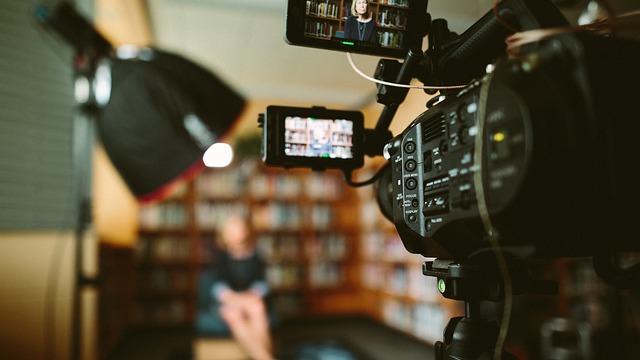What All Keynote Speakers Should Have in Their Demo Reels
You rarely read about selling your services as a public speaker. You hear about how to engage your audience, how to close your presentation, and what tech to use, but you don’t hear about how you get hired on a daily basis. If you’re famous like Elon Musk, no advertising is necessary. But plenty of thought leaders and experienced people are not household names. These speakers need a way to promote their speaking.
One of the best selling tools you can have as a keynote speaker is a demo reel (sometimes called a speaker reel, highlight reel, or sizzle reel). The catch-22 with these reels is that you have to have spoken publicly in order to make a good one. Most people will have a number of successful unpaid talks under their belts, such as TEDX, SXSW, or a local business association, so find your best examples.
Once you have enough evidence you can wow an audience with your topic, what should go into your reel? Here are the ingredients of what I have seen in some of the best reels.
Who you are
Start with an introduction. This is your first impression to people. You spell out your qualifications and experience. Preferably, you have video of some CEO, college president, or TV personality introducing your bonafides. Following that, you could have a voice over, or a clip of you briefly explaining your experience. But if you use a voice over, make sure you have an exciting narrator. Nothing can kill a reel like a boring narrator.
Your expertise
If this is not in your introduction, the next piece of information is your topic expertise. This is the area where you talk about the reason why someone should hire you—your elevator pitch, in other words. Give a brief explanation of why you are an expert in your subject area and what audiences will gain from listening to you.
Samples from your talk
After people know who you are and why you’re an expert, they need to see you delivering the goods. Insert short clips of key points you make. This is not the place for long clips. You want your audience to see how you speak and what you talk about, but not the whole show. If they are interested, you can always send links with long examples of your talks.
Testimonials
Testimonials are key to decision makers. Without seeing your whole talk, potential clients want to know you helped others. Keep all your “brag” material handy so you can update it from the most prestigious organizations and people. Testimonials can be live videos from execs or people whose lives you changed or they can be a short text quote (one sentence or a phrase) of someone’s praise about your speaking. Interweave these testimonials between the short clips of you speaking.
B-roll and graphics
The most fun and exciting demo reels include b-roll, graphics, or both. Most often, your talks are shot from the same wide angle—and aren’t visually interesting to watch. Make your demo reel exciting by including b-roll to show your background, interacting with the audience, or of the topic you talk about. Graphics (charts, images, tables, etc) can also enhance your points and make them more visually interesting.
Audience reaction
There’s no greater seal of approval than a standing ovation. Whenever possible, include video of the audience reacting favorably to your talk. You could include clips of them leaning in, laughing, doing some exciting activity, or just giving you applause. Applause is great at the end.
Good music
Great reels keep up the pace through the soundtrack. Not all talks are dramatic performances so let music keep your audience excited throughout the demo reel. Find some free upbeat music to include in the background. If you have lots of money, have someone compose a music score. But for most of us, finding free music to use is as easy as searching on Google.
Short length
Keep your demo reel short. Your reel should land somewhere between 2-3 minutes. Shorter than that and you’re leaving something out; longer than that and your audience can get restless. Two to three minutes is all you need to cover the elements listed above and get people excited about your speaking.
Good editing
If you know how to edit, the cost is free. Good demo reels can be done by a professional editor for under a thousand. I’ve also seen more established speakers spend tens of thousands of dollars on it. The amount of money you spend is not as important as what is delivered in the video. People are convinced by your expertise, not how slick your reel is. That said, videos are the best sales tools out there so don’t skimp.
Kyle Crocco is the Content Marketing Coordinator at BigSpeak Speakers Bureau and the music video editor for the Santa Barbara band Duh Professors.
